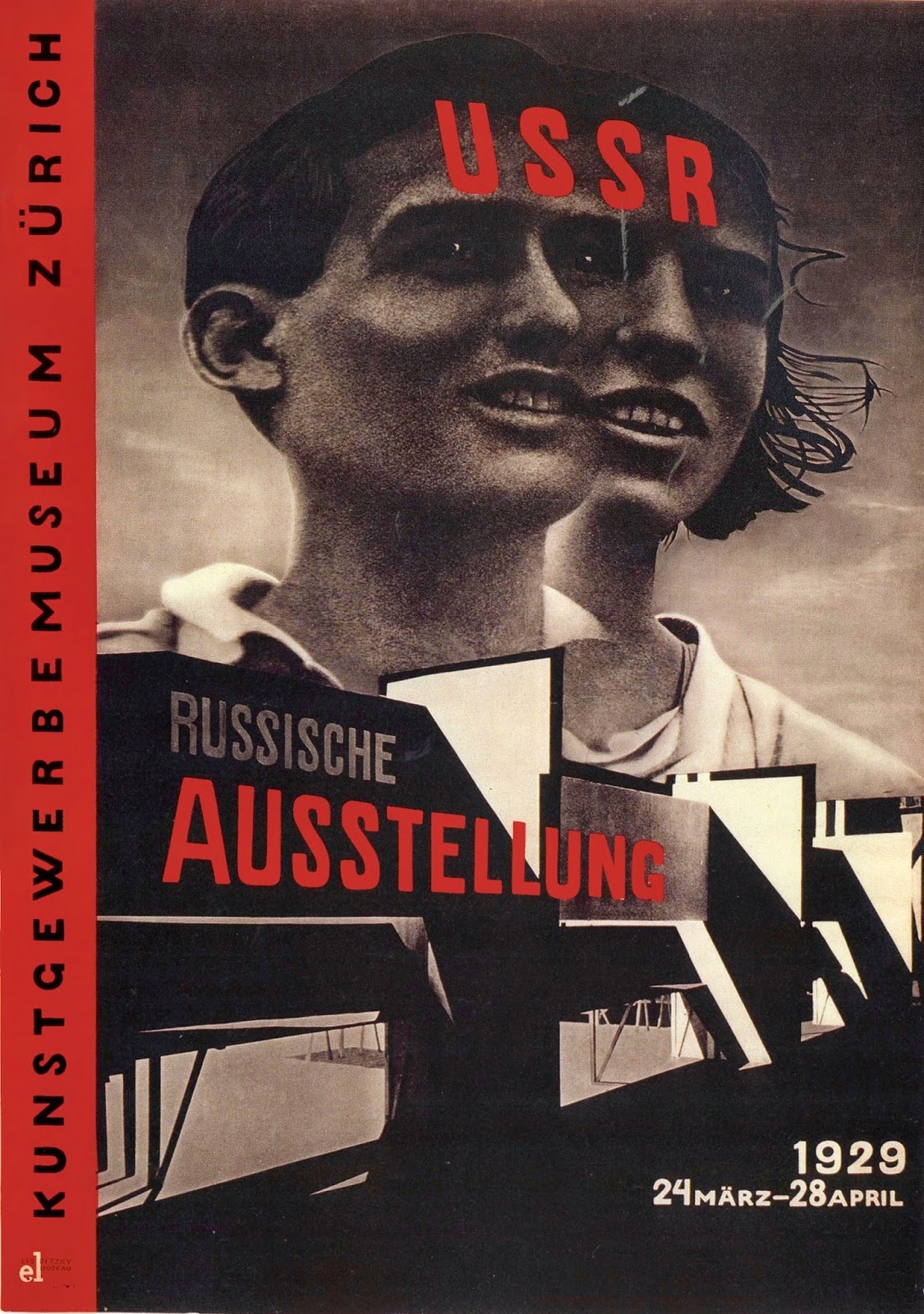Just like the Futurists cultivated photography in their work, in Russia it became a popular medium. Osip Brik writes that photography is a more social medium, with the 'most expensive camera is still less than the cheapest painting'. For this reason, it was adopted as a new social art form, alonsgide its ability to be reproduced. Walter Benjamin highlights the importance of the ability to mechanically reproduce, and it is this reproducibility that was necessary for artists like Lissitzky and Klutsis who created posters that supported the communist government. In Klutsis' Let us Fulfill the Plan of the Great Projects from 1930, the artist uses his own hand as the focus of the montage, filled with copies of hands holding a salute. The anonymous nature of the hand allows any viewer to position themselves in the salute, and the action places the viewer in line with the communist government. A strong use of red further emphasises this connection, as does the name of the piece. Created as a poster, the ability to reproduce and be circulated is crucial to the meaning of the work - Russia had a very spread out population with high levels of illiteracy, and have a mass circulated and direct visual made this work very social. Lissitzky also uses photo montage to create posters that support the Bolsheviks, shown in his Russian Exhibition Poster from 1929, which layers the faces of both a female and a male to show the equality of the workers. Much like the Russian pavilion at the 1937 Paris International Exposition, which depicts a man and woman striding forward atop of huge column, the creation of equality in the sexes was important for communism.
The Russian Pavilion was important for signifying the desires of the Bolshevik government to the rest of the world, and was a architectural feat. Architecture was an extremely visual way of differentiating between the old and the new, and something that we can see in the ideals of Vladimir Tatlin's Monument to the Third International from 1919 which was never realised. Created from metal and glass instead of brick and mortar, this moving building was envisaged to be taller than the Eiffel tower. The movement in this monumental building was built to work was a clock, the start date 1917, symbolic of the October Revolution and the beginning of a new regime. Whilst this building was never realised (a saddening trope of the avant garde and it's desire for a utopia that ends up being missed), the photograph that was created to mimic its appearance places the traditional architecture of St Petersberg behind, emphasising the difference between the old and the new.
The artist also had a change in role, from one of genius to one of engineer. We need only look at the self portraits of two leading artists, Lissitzky and Rodchenko to see how they try and make this differentiation. In Rodchenko's self portrait photograph from 1922, we see the artist wearing a boiler suit and holding a pipe - he is taken out of the romantic ideals of the studio and put in an industrial setting, aligning him with the workers both visually and physically. Lissitzky's is very much the same in that it has a desire to show the artist as a constructor. The Constructor from 1924 is a montage of graph paper, a hand holding a compass, the end of the alphabet all over laying the artists face. Instead of an eye, the artists compass holding hand replaces, showing that the work now comes from the hand, and the mechanisms of creating perfect geometric shapes, rather than the idealised vision of the artist. The graph paper is further showing the importance of geometry and rational thought, whilst the end letter of the alphabet could be symbolic of the end of the past era, making way for a new Bolshevik art form.
Images to use:





No comments:
Post a Comment